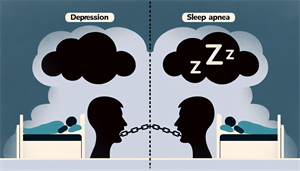
Light Sleeper vs Heavy Sleeper
Ever wondered why some people can sleep through a hurricane, while others wake up to the slightest creak of a floorboard? The secret lies in the fascinating world of sleep types, particularly in the light sleeper vs heavy sleeper spectrum. As complex and individual as we are, our sleep patterns echo that intricacy. Understanding your sleep type, whether you’re a light sleeper, awakened by the softest whisper, or a heavy sleeper, undisturbed by the morning’s hustle and bustle, can unlock the door to better sleep health.
Key Takeaways
Light sleepers wake easily due to noises, light, or movement and may have a harder time reaching deep sleep, while heavy sleepers can snooze through disturbances and often feel more refreshed in the morning. Sleep cycles are made up of REM and NREM stages, which both light and heavy sleepers experience differently. Light sleepers might spend more time in lighter stages, and heavy sleepers more time in deep NREM (Stage 3) sleep. Creating a good sleep environment with ideal temperatures, less light, and reduced noise can improve sleep for both types. Plus, sticking to a regular sleep schedule and bedtime routine can further enhance sleep quality.
Understanding Light Sleepers and Heavy Sleepers
Sleep isn’t a one-size-fits-all process, but rather, it’s a dynamic series of stages and rhythms. At the heart of these rhythms lie two main sleep types - light sleepers and heavy sleepers. A light sleeper, as the name suggests, is someone who is easily disrupted by external stimuli such as: sounds, smells, light, and movement. This makes it challenging for them to achieve the deep, restorative sleep necessary for optimal health. Conversely, heavy sleepers, with a higher arousal threshold, can sleep through potential disturbances and are likely to spend more time in deeper sleep stages.
Factors such as genetic predisposition, the presence of sleep disorders, the quality of the sleep environment, and stress levels can all tip the scales in favor of being a light or heavy sleeper. These factors can significantly influence a person’s ability to reach and maintain deep sleep stages, affecting their overall sleep health.
Characteristics of a Light Sleeper
Light sleepers tend to have a heightened awareness of their surroundings. They tend to spend more time in light sleep stages, with their muscles relaxing less compared to the deeper sleep stages. This could make them sensitive to environmental factors such as light, sounds, or smells, potentially disrupting their sleep. Light sleepers are not just defined by their quick-to-wake nature but also by certain personality traits. They can often be more irritable and are more likely to experience heightened emotional responses and anxiety.
Being aware of the characteristics and challenges of light sleepers can assist in developing strategies for improved sleep quality and overall health.
The Deep Sleeper's Profile
Unlike light sleepers, heavy sleepers can sleep through almost anything. They are the ones who hit the snooze button multiple times or might not even hear the alarm at all! The super deep, restorative kind of sleep, known as deep sleep, is their playground. Deep sleep plays a crucial role in our well-being. It’s the stage where the magic of restoration and repair happens. Our bodies and minds recuperate from the day’s wear and tear, providing us with renewed energy and vitality. Heavy sleepers usually spend more time in this rejuvenating stage, also known as N3 sleep, allowing them to wake up feeling more refreshed and restored.
Decoding Sleep Stages: Where Do You Fall?
Similar to a symphony, sleep has various stages that form a cycle. These stages are primarily divided into Rapid Eye Movement (REM) and Non-Rapid Eye Movement (NREM) sleep, each with unique characteristics and functions. In one night, we typically go through four to five cycles of these stages, with each cycle lasting around 90 minutes. Light sleepers and heavy sleepers experience these stages differently, with light sleepers spending more time in lighter stages and heavy sleepers spending more time in deep NREM (Stage 3) sleep.


